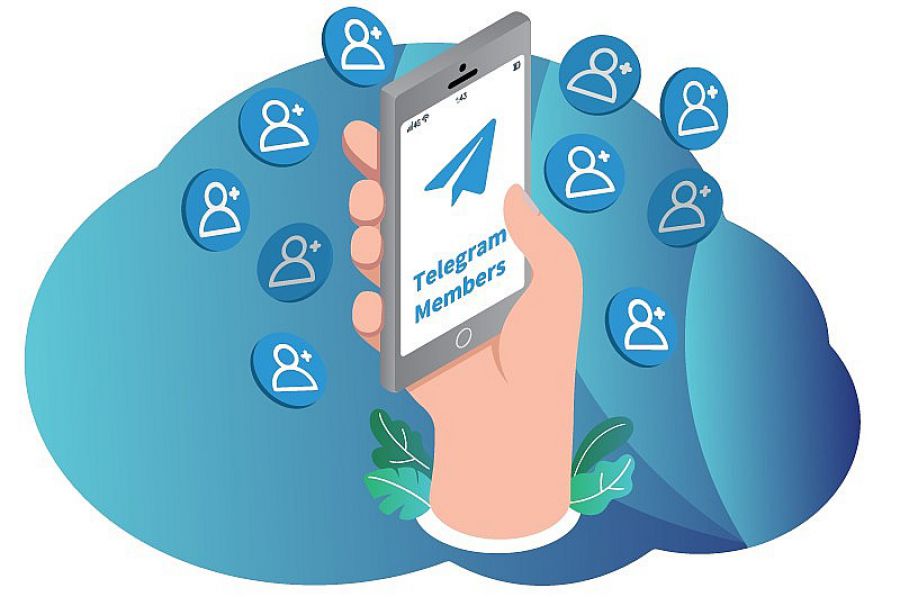How a Brand Should Handle Comments on Social Media: Mistakes and Tips

Social media have become an integral part of modern marketing, offering significant opportunities for brands to interact with their audience. The ability to comment and provide feedback on social media allows brands to establish close relationships with consumers, build loyalty, and enhance recognition. However, working with comments also involves a set of rules, the violation of which can damage a brand's reputation and image.
In this article, we will explore how brands can effectively engage with comments on social media. Successful case examples will be an integral part of this article, demonstrating how proper interaction with comments can positively impact your brand's image and results on social media.
How comment management can benefit a brand:
Comments play a pivotal role in social media and have a substantial influence on the interaction between brands and their audience. Here are several aspects that underscore the importance of comments:
- 1. Feedback and Interaction: Comments enable users to express their opinions, ask questions, share impressions, and discuss content created by the brand. This creates a platform for active engagement and the exchange of ideas between the brand and its audience.
- 2. Relationship Building and Loyalty: Through comments, a brand can establish close relationships with consumers. Responses to comments and feedback create a sense of personal communication and care, contributing to strengthening loyalty to the brand.
- 3. Customer Support: Many users turn to social media to receive support and assistance from a brand. Comments become a space where the brand can promptly respond to questions and complaints, address issues, and meet customer needs.
- 4. Increased Visibility and Engagement: Comments can boost a brand's content visibility. Active discussions and interactions in the comments can stimulate social media algorithms to show the content to a wider audience.
- 5. Research and Analysis: Comments contain valuable information about the audience's opinions and needs. Brands can use comments for audience analysis, campaign effectiveness assessment, and product or service improvement.
- 6. Reputation and Crisis Management: Comments can serve as a tool for protecting a brand's reputation in crisis situations. Effective comment management allows the brand to respond quickly to negative feedback and resolve conflicts.
- 7. Community Building: Comments contribute to the creation of communities around the brand. This can enhance users' sense of belonging and participation, which, in turn, can boost their activity and involvement in the brand's activities.
All of these aspects emphasize the significance of comments on social media as a powerful tool for engaging with the audience, reinforcing reputation, and achieving various goals, including marketing, customer service, and brand management.
Mistakes when dealing with comments
- Unanswered Questions and Complaints: One of the serious mistakes that brands can make is ignoring comments that contain questions and complaints. If a brand doesn't respond to user questions, it can lead to disappointment and a negative perception. Unresolved dialogues can impact the brand's image, creating an impression of negligence and an unwillingness to assist customers.
- Ignoring Negative Reviews: Neglecting negative comments and reviews can harm a brand's reputation. Negative comments can spread quickly, and if a brand doesn't respond adequately, it can worsen the situation. Instead of ignoring, brands should strive to find constructive solutions and demonstrate care for customers.
- Undefined Goals: One of the major mistakes in dealing with comments on social media is the lack of clear goals and objectives. If a brand hasn't determined what it wants to achieve through comments (e.g., increased engagement, addressing customer issues, collecting feedback), it can get lost in the sea of comments and miss opportunities to improve its performance.
- Lack of Monitoring and Analysis: The absence of a comment monitoring and analysis system leaves a brand without crucial information about how its audience reacts to content and products. Unanalyzed comments may hide valuable performance indicators and insights that could be used to enhance social media strategy.
- Inconsistent Responses: If different brand employees respond to comments differently or even contradict each other, it can confuse users. Brands should ensure consistency in their responses, following established customer service standards.
- Impersonal Automated Responses: Automating responses to comments can be useful, but if they sound overly standardized and impersonal, it can create the impression that the brand doesn't value its customers. Individual and human-like responses, even within an automated process, can enhance the brand's perception.
- Discussing Personal Data in Public Comments: Brands should avoid discussing personal data or sensitive customer information in public comments. This violates privacy and can lead to user dissatisfaction.
- Deleting Negative Comments Without Explanation: Deleting negative comments without a proper explanation can cause dissatisfaction and even more active spread of negative information. It's better to approach such situations with tact and attempt to resolve the issue rather than conceal it.
- Ignoring Positive Comments: Positive comments should also be valued. Ignoring them can reduce user engagement. Brands should express gratitude for positive feedback and support positive interactions.
- Ignoring Repeated Questions: If users repeatedly ask the same questions, and the brand doesn't provide clear and accessible answers, it can lead to irritation and dissatisfaction. Brands should pay attention to frequently asked questions and may consider creating a FAQ section for convenience.
- Lack of Adequate Crisis Management Plan: When crises or unforeseen situations occur, such as scandals or major negative events, brands should have a ready crisis management plan for handling comments and feedback. Unjustified silence or an inept response in such situations can harm the brand's reputation.
- Sales and Self-Promotion Instead of Interaction: In social media, users primarily expect communication, information, and support, not constant advertising and direct sales. Brands that use comments solely for advertising and promoting their products or services may alienate their audience.
- Failure to Comply with Platform Rules and Legislation: Violating social media platform rules or legislation, such as data protection laws, can lead to the brand's account being blocked or legal consequences. Brands should follow the rules and laws and stay updated on social media platform rules.
- Insufficient Staff Training: Not all staff responsible for comments have sufficient skills and knowledge. Inadequate staff training can lead to incorrect responses and misunderstandings of audience needs.
Correcting these mistakes requires attention and effort from the brand. A clear understanding of the role of comments, their significance, and the right approach to them can help brands successfully interact with their audience on social media.
Tips for Dealing with Comments on Social Media
Defining Clear Goals and Strategy: Before engaging with comments, a brand should clearly define the goals it wants to achieve. These goals could be related to increasing audience engagement, improving customer service, collecting feedback, or enhancing brand recognition.
Creating a Response Plan: A response plan outlines how a brand will handle different types of comments. This includes factors like response time, tone and communication style, as well as processes for managing negative feedback. A clear plan streamlines comment responses and makes the process more effective.
Example: A customer support service provider develops a response plan that includes a mandatory response time for customer complaints within 24 hours. The plan also contains instructions on how to handle various types of inquiries and how to escalate them to relevant specialists.
Promptly Addressing Questions and Requests: The speed of response to comments is crucial. Responding quickly to user questions and requests demonstrates the brand's care for its audience. Studies show that fast responses on social media positively impact customer satisfaction.
Constructive Interaction with Negative Comments: Negative comments are inevitable, and it's important to respond to them with respect and an attempt to resolve the situation. Brands can use negative comments as opportunities to improve their products or services and enhance their reputation by showing a willingness to assist customers.
Example: Instead of ignoring, a brand responds to a negative comment, apologizes for the issue, and offers a replacement or refund. This can transform a negative experience into a positive one and build customer trust.
Maintaining Consistency in Style and Tone: It's important for the brand to maintain consistency in style and tone across all comments and responses. This helps strengthen the brand's image and make it recognizable. Define a communication style and stick to it, regardless of which team member is responding to comments.
Establishing Clear Roles and Responsibilities: If the brand has a team responsible for comments, it's essential to define the roles and responsibilities of each team member. This simplifies coordinated comment management and reduces the risk of duplicating or missing responses.
Example: A tourism company determines that one employee responds to comments related to reservations, while another answers questions about tourist attractions.
Asking Questions and Encouraging Discussion: Actively encouraging dialogue can promote content discussion and stimulate users to comment. Ask questions, request opinions, and explore the interests of your audience.
In which social media platforms are comments particularly important?
Comments play a significant role in most social media platforms, but their importance can vary depending on the platform.
Instagram: Comments are especially vital for brands in fashion, beauty, and travel industries. Interactive comments, including questions and calls to action, help stimulate engagement. For example, Adidas frequently uses comments to interact with followers and poses CTAs in the form of questions.
Twitter: Twitter is known for its speed and directness. Comments are used to discuss current events and breaking news updates. Brands actively engage with followers and other brands, often creating viral tweets and memes.
YouTube: Comments under YouTube videos can be a key tool for feedback and engaging the audience. However, many brands disable comments on YouTube due to the inability to respond to all of them, to avoid looking ignored. For example, comments under Apple's videos are disabled.
How to respond to negative comments
Responding to negative comments on social media requires a calm and professional approach. Here are steps to help brands effectively address negative feedback:
-
Maintain Calm and Professionalism: It's essential to remain calm and professional when responding to negative comments. Avoid emotional reactions or arguments. Your response should be thoughtful and respectful.
-
Quick Response: Respond to negative comments as promptly as possible. This demonstrates your commitment to customer care and shows that you are attentive to feedback.
-
Acknowledge the Customer's Experience: Acknowledge the customer's experience, even if it's negative. For instance, "We regret that you've had this issue."
-
Publicly Acknowledge Mistakes: If the brand made a mistake, openly admit it. Users appreciate honesty. For example, "Yes, we made a mistake, and we're working to fix it."
-
Move to Private Messages: If the comment requires a detailed discussion or contains personal information, offer to continue the conversation in private messages.
-
Offer a Solution: Propose a specific solution or compensation if applicable. For example, "We are ready to refund your order or offer you a discount on your next purchase."
-
Show Empathy and Understanding: Display understanding and empathy towards the customer, even if their negative review seems unjust. For example, "We understand this was an unpleasant experience for you."
-
Maintain a Positive Tone: Your responses should maintain a positive and friendly tone, even when dealing with negative comments. This helps improve the overall brand image.
-
Monitoring and Learning: Continuously monitor feedback and analyze responses to negative comments. Use this information to train staff and improve processes.
-
Public Closure: After concluding the conversation, publicly express hope that the customer will be satisfied in the future and bid farewell politely.
Effective responses to negative comments should be constructive and demonstrate the brand's commitment to problem-solving and service quality. This helps build customer trust and maintain a positive brand image.
Comment deletion
Deleting comments should be done very carefully and in accordance with specific criteria. Determining which comments can be deleted depends on the brand's policy, community standards, and legal restrictions. Here are common cases where comment deletion may be justified:
-
Spam: Delete comments that contain spam, including links to malicious websites, repetitive comments, or unreliable offers.
-
Insults and Hate: Remove comments containing insults, threats, discrimination, hate speech, racism, or other forms of toxic behavior.
-
Personal Information: If comments contain users' personal information, such as phone numbers, addresses, or other confidential details, they should be deleted to protect privacy.
-
Unauthorized Advertising: Delete comments containing advertising if it's posted without the page administrators' consent or without compliance with platform advertising rules.
-
Political Disputes: Depending on the page's policy, comments involving political disputes or discussions may be deleted if they violate community norms or lead to conflicts.
-
Uncensored Language: Delete comments that contain uncensored words or materials that violate platform rules.
-
Trolling: Removing "trolls" is important for maintaining healthy communication and preventing conflicts within the community. However, it's crucial to distinguish between trolling and constructive criticism or discussion before deleting comments to avoid suppressing freedom of speech.
Should you include prices in comments?
Potential customers often inquire about prices in comments if they are not mentioned in the post text. Whether you should include prices in comments depends on various factors, including the type of business, target audience, and marketing strategy:
-
Public Price Availability: Mentioning prices in comments makes pricing information publicly accessible and can be beneficial if you offer competitive prices and aim to attract customers.
-
Transparency and Convenience: If your brand values transparency and convenience for customers, providing prices in comments can simplify the decision-making process for potential buyers.
-
Compliance with Platform Policies: On some social media and platforms, posting prices in comments may violate rules. Ensure that you comply with platform policies and terms of use.
However, remember the following:
-
Confidentiality and Brand Image: If your brand is positioned as premium and serves a high-end audience, posting prices in comments may not align with your brand image. In this case, directing potential customers to private messages for pricing information may be more suitable, allowing for better lead and potential customer management. Remember that a high-end audience highly values its time.
-
Potential Sales and Leads: If you have confidence in your sales department, directing potential customers to private messages leads to direct conversations with buyers and may lead to quicker sales.
It's essential to adapt your approach to posting prices in comments based on your goals, target audience, and the platform. Consider which methods best suit your business and how you can best serve your customers.
Try Popsters Trial plan to get content activity statistics of any pages for a next 7 days for free
Try for free












